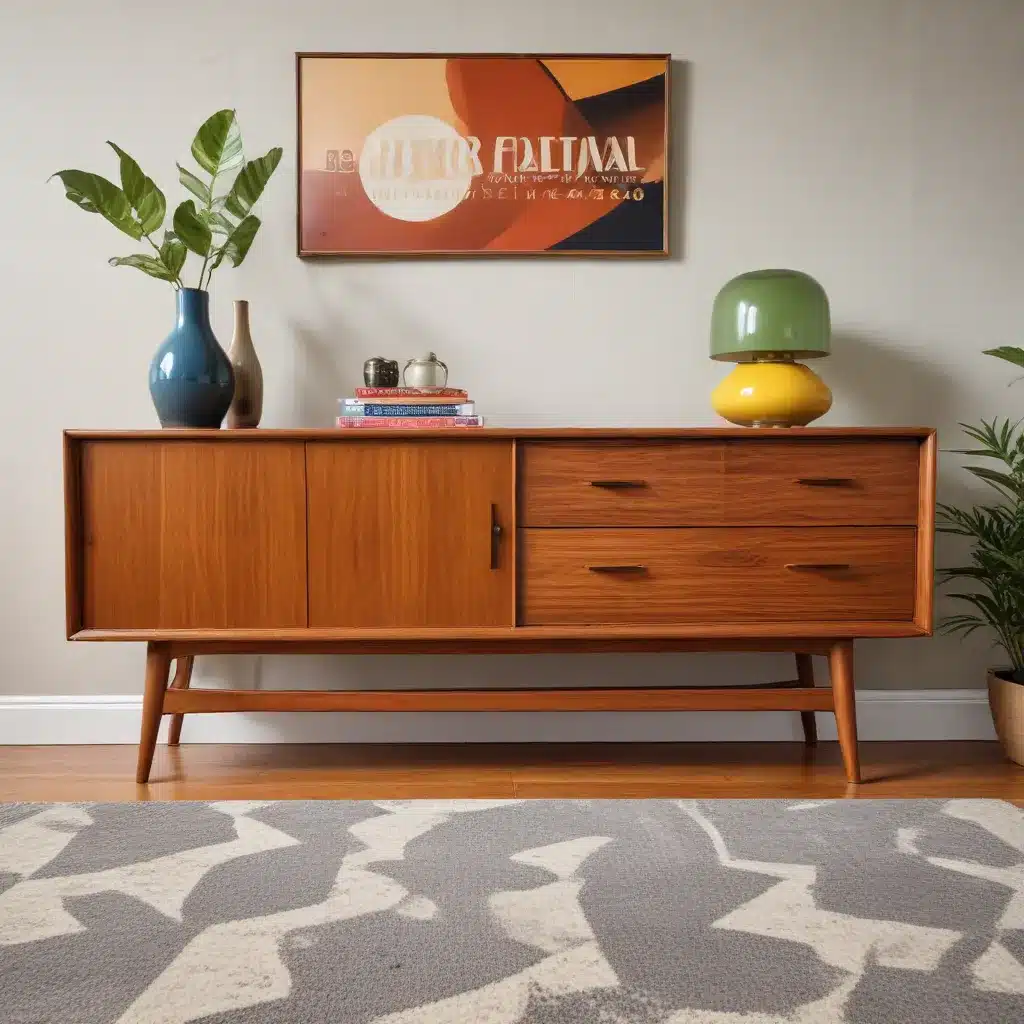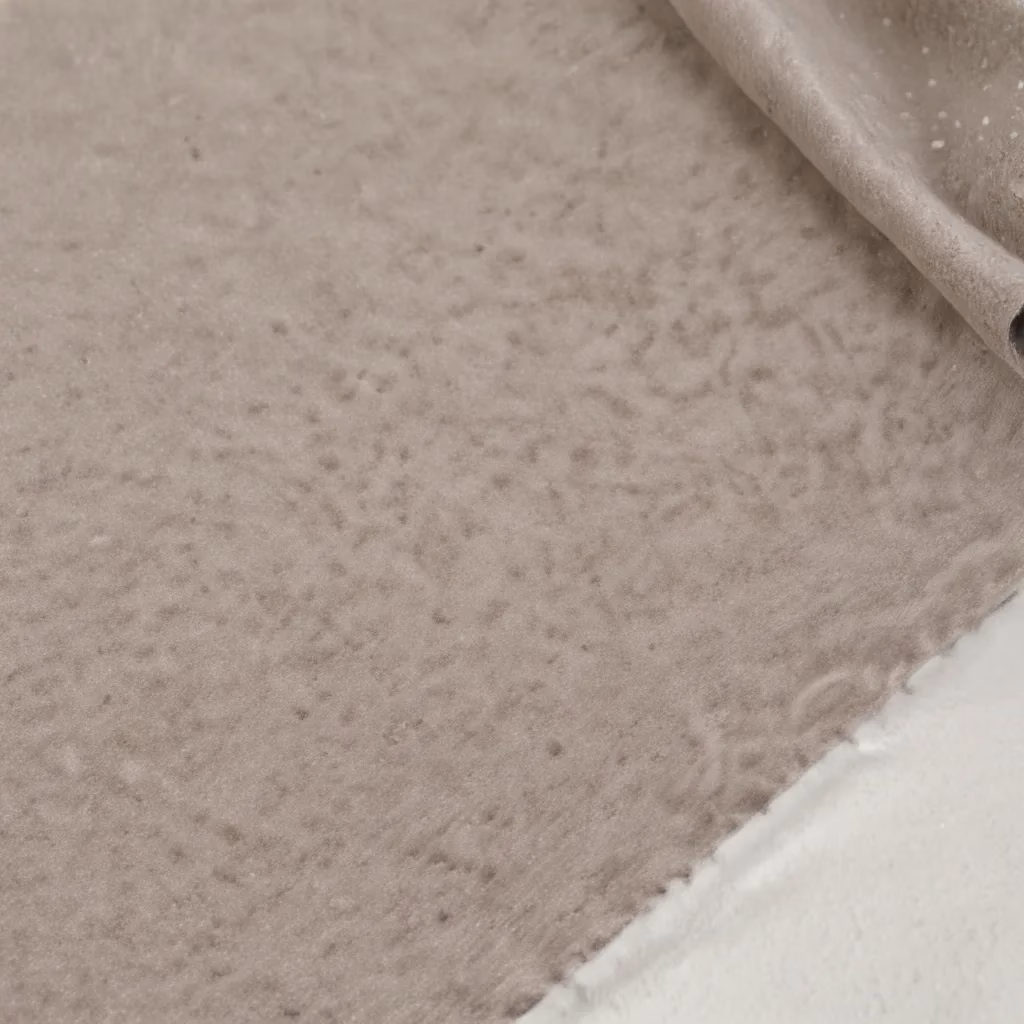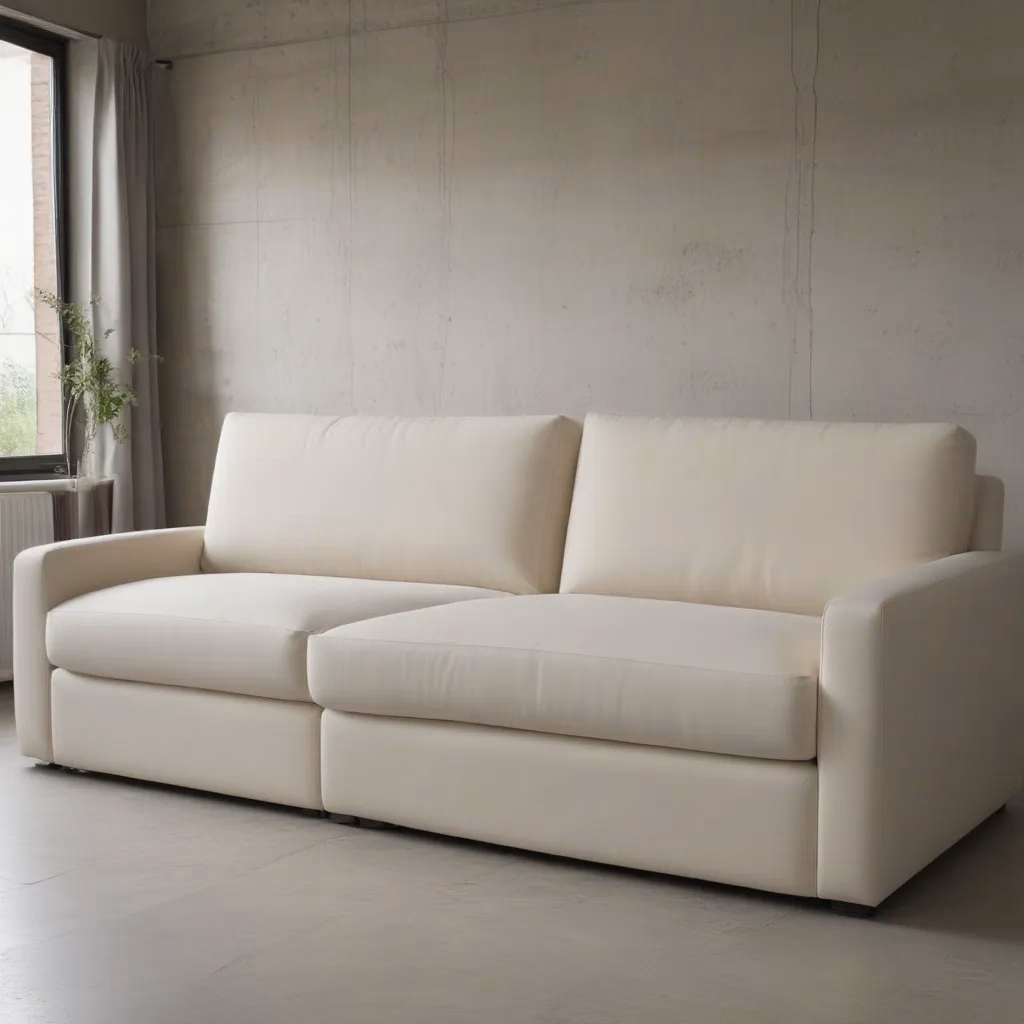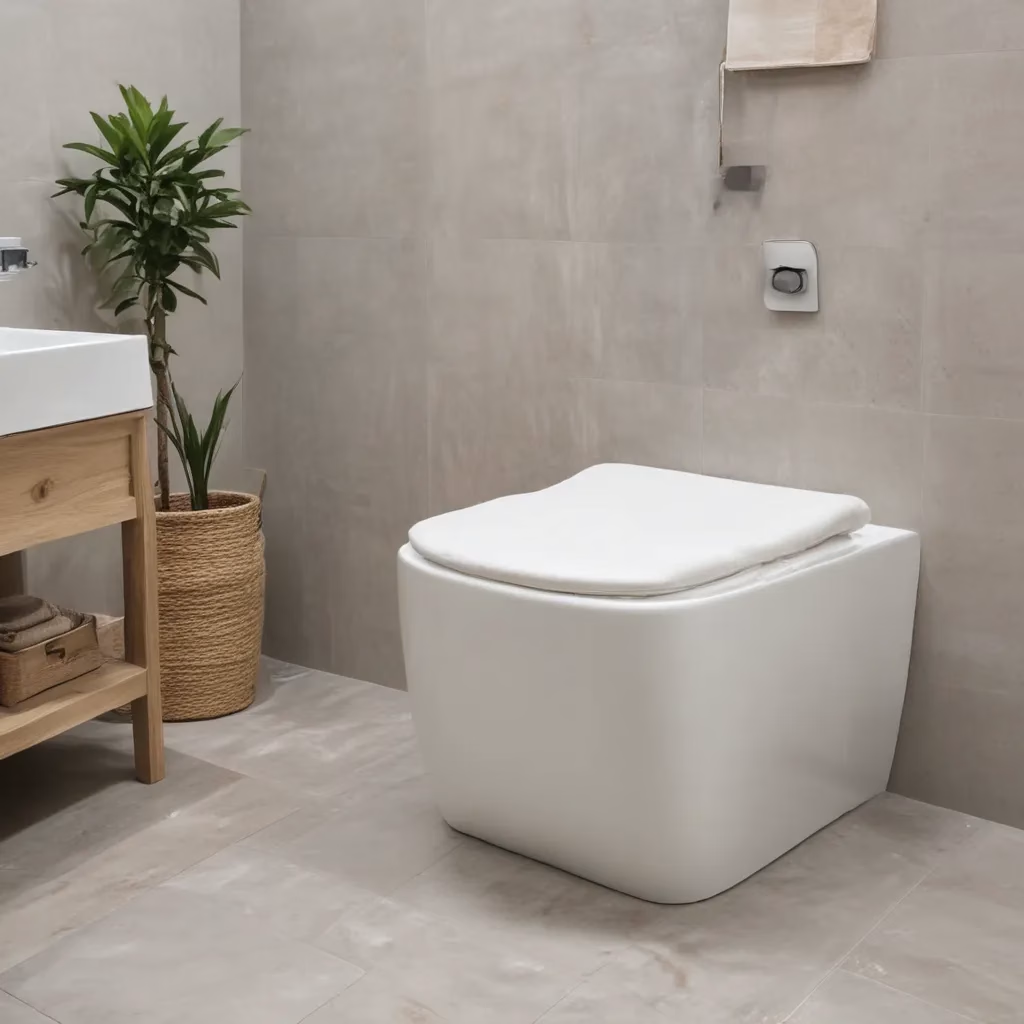
The Resurgence of Mid-Century Modern Design
As a furniture specialist with years of experience in the industry, I’ve witnessed countless trends come and go. However, one style that has stood the test of time and continues to captivate homeowners and designers alike is Mid-Century Modern. This iconic design movement, which originated in the mid-20th century, has experienced a remarkable resurgence in recent years.
What makes Mid-Century Modern so enduring? In my professional opinion, it’s the perfect blend of form and function. The clean lines, organic shapes, and emphasis on simplicity create a timeless aesthetic that fits seamlessly into contemporary interiors. But it’s not just about looks – the practicality and comfort of Mid-Century Modern furniture make it a favorite among those who appreciate both style and substance.
I’ve had the pleasure of working with numerous clients who have fallen in love with Mid-Century Modern design. One particular project stands out in my memory: a young couple moving into their first home together. They were drawn to the retro charm of Mid-Century Modern but worried it might feel outdated. Together, we created a space that honored the classic elements of the style while incorporating modern touches. The result? A home that felt both nostalgic and fresh, proving that Mid-Century Modern is anything but a passing fad.
Key Elements of Mid-Century Modern Furniture
When discussing Mid-Century Modern furniture with my clients, I always emphasize the distinctive features that define this style. Let’s break down the key elements that make Mid-Century Modern pieces so recognizable and beloved:
-
Sleek, Clean Lines: One of the hallmarks of Mid-Century Modern design is its emphasis on simplicity. You’ll find furniture with straight, clean lines and minimal ornamentation. This no-fuss approach creates a sense of elegance and allows the beauty of the materials to shine through.
-
Organic Shapes: While clean lines are prominent, Mid-Century Modern also embraces organic, curved forms. Think of the iconic egg chair or kidney-shaped coffee tables. These shapes add a softness and visual interest to the overall aesthetic.
-
Functionality: Mid-Century Modern furniture is all about practicality. Each piece is designed with a clear purpose in mind, often incorporating clever storage solutions or multi-functional elements. This focus on functionality makes Mid-Century Modern furniture as useful as it is beautiful.
-
Materials: Natural materials play a significant role in Mid-Century Modern design. Wood, particularly teak, walnut, and oak, is commonly used. You’ll also see plenty of leather, metal, and glass. The combination of these materials creates a warm, inviting atmosphere that balances the clean lines of the furniture.
-
Color Palette: While neutral tones are prevalent, Mid-Century Modern isn’t afraid of color. Bold, saturated hues are often used as accents, adding personality and vibrancy to a space. Think mustard yellow, avocado green, or vibrant orange – colors that evoke the 1950s and 60s without feeling dated.
In my experience, understanding these key elements is crucial for anyone looking to incorporate Mid-Century Modern pieces into their home. It’s not about recreating a museum-like setting from the 1960s, but rather about capturing the essence of the style and adapting it to contemporary living.
Selecting the Perfect Mid-Century Modern Sofa
When it comes to anchoring a Mid-Century Modern living room, the sofa is undoubtedly the star of the show. As someone who’s helped countless clients find their ideal sofa, I can attest that choosing the right one can make or break your Mid-Century Modern aesthetic. Here are some factors to consider when selecting the perfect Mid-Century Modern sofa:
Style
Mid-Century Modern sofas typically feature clean lines, tapered legs, and a low profile. Look for sofas with tufted upholstery, which adds a touch of sophistication without being overly ornate. Button tufting is particularly characteristic of the era.
One of my favorite Mid-Century Modern sofa styles is the classic three-seater with a slight curved back. It’s a versatile piece that works well in both small apartments and spacious living rooms. For a more dramatic statement, consider a Chesterfield-inspired sofa with a tufted back and arms – it’s a great way to add a touch of glamour to your Mid-Century Modern space.
Materials
When it comes to upholstery, leather is a popular choice for Mid-Century Modern sofas. It’s durable, easy to clean, and develops a beautiful patina over time. However, don’t feel limited to leather – wool, velvet, and even performance fabrics can work beautifully in a Mid-Century Modern setting.
For the frame, look for sofas with exposed wood elements, particularly in teak, walnut, or oak. These warm wood tones are quintessentially Mid-Century Modern and add a natural element to your space.
Color
While neutral colors like black, white, and gray are safe choices, don’t be afraid to embrace bold colors in your Mid-Century Modern sofa. Rich jewel tones like emerald green or sapphire blue can make a stunning statement. Alternatively, earthy tones like rust orange or mustard yellow can add warmth and character to your living room.
Remember, your sofa doesn’t have to be a solid color. Geometric patterns were popular in Mid-Century Modern design, so consider a sofa with a subtle pattern for added visual interest.
Comfort
While style is important, never sacrifice comfort for aesthetics. Mid-Century Modern sofas should be as comfortable as they are beautiful. Look for sofas with firm but supportive cushions. Many authentic Mid-Century Modern sofas have removable cushions, which makes cleaning and maintenance easier.
When shopping for a Mid-Century Modern sofa, always take the time to sit on it and imagine spending a lazy Sunday afternoon lounging. A good sofa should invite you to relax and unwind.
Scale
Consider the size of your space when choosing your Mid-Century Modern sofa. One of the beauties of this style is its ability to work in both small and large spaces. For smaller rooms, look for sofas with raised legs – this creates a sense of airiness and makes the room feel more spacious.
In larger rooms, don’t be afraid to go big. A sectional sofa can work wonderfully in a Mid-Century Modern setting, providing ample seating without overwhelming the space.
Remember, the key to selecting the perfect Mid-Century Modern sofa is balance. You want a piece that captures the essence of the era while still feeling fresh and contemporary. It should complement your existing decor while making a statement of its own.
For those looking to explore a wide range of Mid-Century Modern inspired sofas, I often recommend checking out Sofa Spectacular. They have an excellent selection that captures the spirit of Mid-Century Modern design while offering modern comfort and durability.
Incorporating Mid-Century Modern Pieces into Your Home
One of the questions I’m frequently asked is how to incorporate Mid-Century Modern furniture into existing decor. The beauty of this style is its versatility – Mid-Century Modern pieces can complement a variety of design aesthetics. Here are some tips I’ve gathered from my years of experience:
Start Small
If you’re new to Mid-Century Modern design, start with smaller pieces. A side table, a floor lamp, or a single armchair can introduce the style without overwhelming your space. These pieces can serve as accents, adding a touch of retro charm to your existing decor.
I once worked with a client who was hesitant about fully embracing Mid-Century Modern. We started by introducing a sleek, wooden sideboard in her dining room. The piece’s clean lines and warm wood tones blended beautifully with her traditional decor, and it wasn’t long before she was ready to incorporate more Mid-Century Modern elements throughout her home.
Mix and Match
Don’t feel obligated to create a perfectly period-accurate room. Some of the most interesting interiors I’ve designed combine Mid-Century Modern pieces with elements from other design styles. For example, a Mid-Century Modern sofa can look stunning paired with a contemporary coffee table or a traditional Persian rug.
The key is to find common elements that tie different pieces together. This could be a color palette, a material (like wood or metal), or even a general aesthetic (such as minimalism).
Focus on Lighting
Lighting is an excellent way to introduce Mid-Century Modern style to your home. The era produced some truly iconic lamp designs that remain popular today. A sleek floor lamp with a curved arm or a pendant light with a sculptural shade can add a distinctly Mid-Century Modern touch to any room.
Don’t Forget the Details
Mid-Century Modern design isn’t just about furniture – it encompasses all aspects of interior design. Consider incorporating era-appropriate artwork, such as abstract prints or atomic-age inspired pieces. Textiles with geometric patterns or bold, solid colors can also help reinforce the Mid-Century Modern aesthetic.
Create a Focal Point
In many Mid-Century Modern interiors, a statement piece serves as the room’s focal point. This could be a bold-colored sofa, an uniquely shaped chair, or even a dramatic light fixture. Allow this piece to shine by keeping the surrounding decor relatively simple.
I once designed a living room around a stunning teal velvet sofa. We kept the rest of the furniture neutral, with warm wood tones and crisp white walls. The result was a space that felt both vibrant and balanced, with the sofa as the clear star of the show.
Consider Scale
Mid-Century Modern furniture often has a lower profile than contemporary pieces. When incorporating these items into your home, pay attention to scale. A low-slung sofa might look out of place next to a tall bookshelf or under high ceilings. Balance is key – mix low-profile pieces with taller elements to create visual interest and maintain proportion in your space.
Embrace Functionality
One of the core principles of Mid-Century Modern design is the idea that form follows function. When selecting pieces for your home, consider their practicality as well as their aesthetic appeal. Look for furniture with built-in storage, multipurpose items, or pieces that can be easily rearranged to suit different needs.
Remember, incorporating Mid-Century Modern elements into your home should be a fun and creative process. Don’t be afraid to experiment and trust your instincts. The goal is to create a space that reflects your personal style while honoring the timeless appeal of Mid-Century Modern design.
Maintaining Your Mid-Century Modern Furniture
As someone who’s been in the furniture industry for years, I can’t stress enough the importance of proper maintenance for your Mid-Century Modern pieces. These items are not just furniture; they’re investments in design history. Here’s how you can keep your Mid-Century Modern furniture looking its best for years to come:
Wood Care
Many Mid-Century Modern pieces feature beautiful wood elements. To maintain their luster:
-
Dust regularly: Use a soft, lint-free cloth to remove dust weekly. This prevents buildup that can scratch the surface over time.
-
Avoid direct sunlight: Prolonged exposure to sunlight can fade and damage wood. Use curtains or blinds to protect your furniture during the sunniest parts of the day.
-
Use coasters and placemats: Prevent water rings and heat damage by always using coasters under drinks and placemats under hot dishes.
-
Polish sparingly: While it’s tempting to polish often for that high shine, too much polish can actually damage the wood. Stick to polishing once or twice a year with a high-quality furniture polish.
-
Address scratches promptly: For light scratches, try rubbing them out with a walnut or a touch-up marker designed for furniture. For deeper scratches, consult a professional.
Upholstery Care
Whether your Mid-Century Modern sofa is upholstered in fabric or leather, proper care is essential:
-
Vacuum regularly: Use a soft brush attachment to gently vacuum upholstery weekly. This removes dust and prevents dirt from settling into the fibers.
-
Spot clean spills immediately: Blot (don’t rub) spills with a clean, white cloth. For tougher stains, use a cleaning solution appropriate for your upholstery type.
-
Rotate cushions: To ensure even wear, rotate and flip cushions regularly.
-
Professional cleaning: Have your upholstered pieces professionally cleaned every 12-18 months, or more frequently for high-traffic items.
-
Leather care: For leather upholstery, use a leather conditioner every 6-12 months to prevent drying and cracking.
Metal Care
Many Mid-Century Modern pieces incorporate metal elements. Here’s how to keep them shining:
-
Regular dusting: Like wood, metal benefits from regular dusting with a soft cloth.
-
Avoid moisture: Wipe up any water immediately to prevent rust or tarnishing.
-
Polish when needed: Use a metal polish appropriate for the type of metal (brass, chrome, etc.) to restore shine.
-
Check for loose parts: Periodically check and tighten any loose screws or bolts.
General Maintenance Tips
-
Climate control: Extreme temperatures and humidity can damage furniture. Try to maintain a consistent environment in your home.
-
Handle with care: When moving furniture, lift rather than drag to avoid damaging legs or scratching floors.
-
Regular inspections: Periodically inspect your furniture for any signs of damage or wear. Catching issues early can prevent more serious problems down the line.
-
Respect weight limits: Don’t overload shelves or use furniture for purposes it wasn’t designed for.
-
Keep pets in check: If you have pets, consider using throws to protect upholstery and trimming your pet’s nails regularly to prevent scratches.
Remember, while these care tips are generally applicable to most Mid-Century Modern furniture, always check the manufacturer’s specific care instructions for your pieces. Some items may require special care or products.
In my experience, clients who diligently maintain their Mid-Century Modern furniture not only enjoy their pieces for longer but often find that well-cared-for items appreciate in value over time. Think of your furniture care routine as a way of preserving a piece of design history.
The Future of Mid-Century Modern Design
As we look to the future, it’s clear that Mid-Century Modern design isn’t going anywhere. In fact, I believe we’re seeing an evolution of the style that honors its roots while adapting to contemporary needs and tastes. Here’s what I foresee for the future of Mid-Century Modern design:
Sustainability Focus
One of the most significant trends I’ve observed is the increasing emphasis on sustainability in furniture design. This aligns perfectly with the Mid-Century Modern ethos of quality craftsmanship and timeless design. We’re seeing a rise in the use of eco-friendly materials and production methods in Mid-Century Modern inspired pieces.
Many of my clients are now seeking out furniture made from sustainably sourced wood or recycled materials. There’s also a growing interest in vintage and second-hand Mid-Century Modern pieces, which is not only environmentally friendly but also allows homeowners to own authentic pieces of design history.
Technology Integration
While Mid-Century Modern design is rooted in the mid-20th century, it’s adapting to 21st-century technology. I’m seeing more designs that incorporate charging stations, hidden wire management, and smart home features while maintaining the clean, uncluttered aesthetic that defines Mid-Century Modern style.
For example, I recently worked on a project where we integrated a wireless charging pad into a Mid-Century Modern inspired side table. The result was a piece that looked authentically retro but functioned for modern needs.
Customization and Personalization
Another trend I’m excited about is the move towards greater customization in Mid-Century Modern furniture. Manufacturers are offering more options in terms of fabrics, finishes, and sizes, allowing homeowners to tailor pieces to their specific needs and tastes.
This customization extends to modular furniture as well. Sectional sofas and modular shelving units that can be reconfigured to suit changing needs are becoming increasingly popular. These pieces embody the Mid-Century Modern principles of flexibility and functionality while allowing for personal expression.
Blending with Other Styles
As Mid-Century Modern continues to influence contemporary design, we’re seeing more interiors that blend Mid-Century elements with other styles. This eclectic approach creates spaces that feel curated and personal rather than like a Mid-Century time capsule.
I often encourage my clients to mix Mid-Century Modern pieces with items from other eras or styles. A Mid-Century sofa can look stunning paired with a contemporary art piece or a traditional rug. This blending of styles creates depth and interest in a space.
Color Evolution
While the classic Mid-Century color palette of earthy tones and bold primary colors remains popular, I’m seeing a shift towards softer, more muted hues. Pastels and jewel tones are being incorporated into Mid-Century Modern inspired interiors, creating spaces that feel fresh and contemporary while still honoring the style’s roots.
Emphasis on Craftsmanship
In an era of mass production, there’s a renewed appreciation for the craftsmanship that characterized original Mid-Century Modern pieces. I’m seeing a rise in small-batch production and artisanal Mid-Century inspired furniture. These pieces often feature hand-finished details and high-quality materials, echoing the attention to detail found in vintage Mid-Century furniture.
Adapting to Smaller Spaces
As urban living becomes more common, Mid-Century Modern design is adapting to smaller spaces. We’re seeing more compact versions of classic designs and multi-functional pieces that work well in apartments and smaller homes. The clean lines and uncluttered aesthetic of Mid-Century Modern naturally lend themselves to making small spaces feel larger and more open.
In conclusion, the future of Mid-Century Modern design looks bright. Its timeless appeal, combined with its adaptability to modern needs, ensures that this style will continue to influence interior design for years to come. Whether you’re a longtime fan of the style or just discovering its charms, there’s never been a better time to incorporate Mid-Century Modern elements into your home.
As we wrap up this exploration of Mid-Century Modern design, I hope you’ve gained some insights and inspiration. Remember, the key to successful interior design is creating a space that reflects your personal style and meets your needs. Mid-Century Modern offers a versatile foundation for doing just that.
If you’re looking to add some Mid-Century Modern flair to your home, why not start with the centerpiece of any living room – the sofa? Sofa Spectacular offers a range of Mid-Century Modern inspired pieces that combine classic design with modern comfort. Happy decorating!



